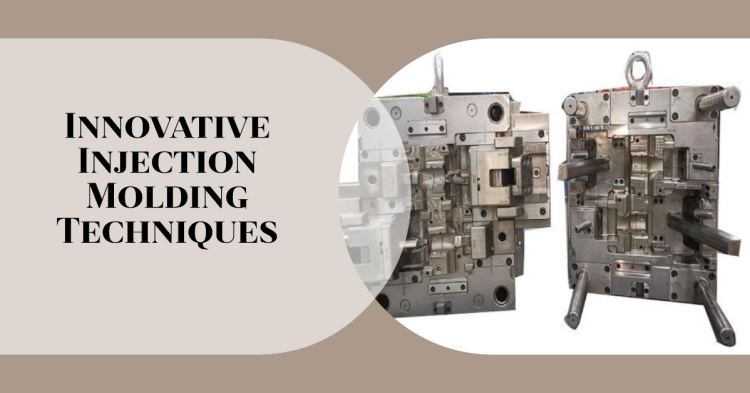Injection molding is popular because it can produce plastic components, from small intricate pieces to large complex items. This versatility is further enhanced by innovative techniques that continue to evolve, making Injection Molding Services more efficient, cost-effective, and capable of meeting the increasingly stringent demands of various industries.
Overmolding: Enhancing Functionality and Aesthetics
Overmolding is a transformative injection molding technique where a secondary material is molded over a pre-existing part. This unique process is renowned for adding superior tactile and aesthetic qualities to products. Often utilized in consumer goods, over-molding seamlessly combines different materials, such as a soft rubber exterior over a rigid plastic core, to create a single, cohesive component.
Overmolding stands out for its ability to impart enhanced functionality and durability. It’s valuable in creating or adding protective layers to sensitive tools and electronics. Overmolding offers an ingenious solution for designing products that are both user-friendly and robust, elevating the end-user experience significantly.
Gas-Assist Injection Molding
This process primarily involves two stages: the injection of molten plastic into a mold, followed by introducing high-pressure gas (usually nitrogen) into the plastic. This process begins by partially filling a mold with molten plastic, followed by injecting high-pressure gas, typically nitrogen. This gas expands within the plastic, pushing it against the mold walls, creating robust yet lightweight components with a smooth finish.
This technique is renowned for its efficiency and quality enhancement in part production. Introducing gas reduces material usage and weight while ensuring strength and rigidity. It also eliminates common defects like sink marks, offering superior surface aesthetics.
It’s particularly beneficial for large, complex parts like automotive panels, handles, and dashboards, where weight reduction is crucial. In consumer goods, it’s used for creating ergonomic furniture, durable sporting goods, and sleek home appliances. This technique also finds relevance in medical devices and electronic housings, offering structural integrity and design flexibility.
Micro Injection Molding for Extremely Small and High-precision Parts
Micro injection molding involves injecting a minute amount of molten plastic into a mold, which is then cooled and solidified to form a part. The key to micromolding is the precision and accuracy of the mold and the injection process, as it deals with parts often smaller than a grain of sand and with minute features.
This method can produce intricate parts with exceptional accuracy and consistency. It allows for complex geometries and fine details that would be impossible with traditional injection molding methods.
Micro injection molding is incredibly versatile and finds applications in various industries. It’s crucial in the medical field to create tiny components for devices like insulin pumps, surgical instruments, and implants. In electronics, for connectors, sensors, and micro switches.
The automotive uses precise parts used in larger assemblies. Furthermore, this precision molding process is also essential in micro-optics and pharmaceutical applications, demonstrating its broad applicability and utility.
Liquid Silicone Rubber (LSR) Molding
Liquid Silicone Rubber (LSR) Molding Technique involves the use of liquid silicone, which is known for its flexibility and durability. Typically, LSR is injected into a heated mold, and then rapidly cured. This ensures a fast production cycle, ideal for high-volume manufacturing.
LSR’s unique properties allow for parts resistant to extreme temperatures and chemicals. Consequently, it’s perfect for medical devices, automotive components, and cooking utensils. LSR parts are also biocompatible and easy to sterilize, making them suitable for sensitive applications. In automotive, it’s vital for gaskets and vibration dampening parts Additionally, consumer goods used this for bakeware and baby products, highlighting its versatility.
Injection Molds: The Heart of the Injection Molding Process
Injection molds are crucial to the success of the injection molding process, often hailed as its heart. They are created using advanced technologies like CNC (Computer Numerical Control) milling and EDM (Electrical Discharge Machining). Particularly, the precision of a CNC Milling Service in China ensures high-quality molds with intricate details. functionality and aesthetics.
Furthermore, the design and quality of the mold directly impact the outcome of the molded parts. Factors like mold material, temperature control, and the design of the mold cavity play a pivotal role. A well-designed mold ensures uniform cooling and minimizes defects.
Lastly, the longevity and maintenance of the mold are vital for cost-effectiveness in large-scale production. Regular maintenance, enabled by the precision of CNC milling and EDM, ensures consistent quality over thousands if not millions.

